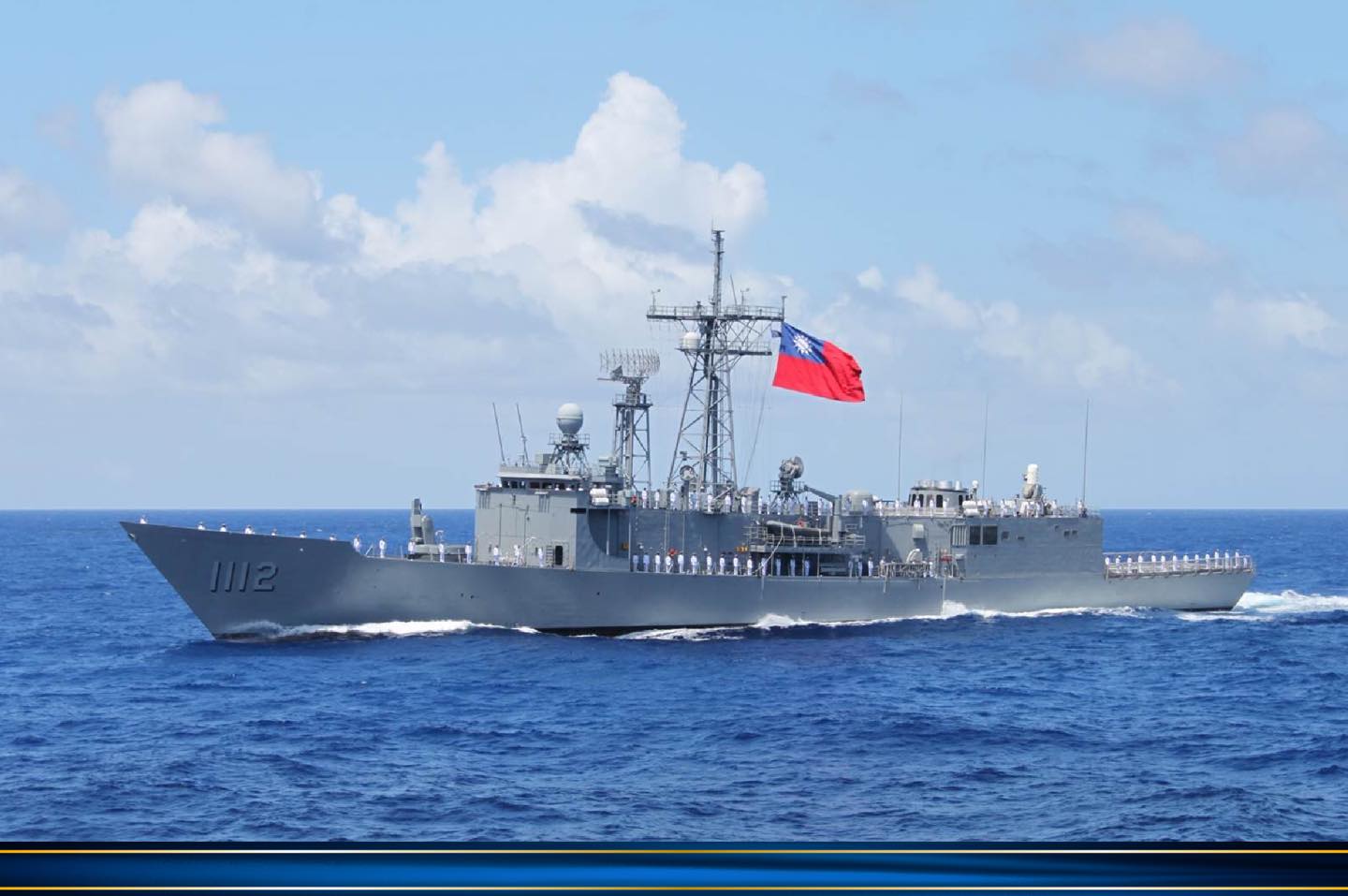
Taiwan’s Republic of China Navy is facing two looming threats from China and has been struggling to create a force structure to handle both.
First, the ROCN must be able to meet the risk of a potential full-scale invasion by the People’s Republic of China. Second, it has to confront the constant grey zone activities carried out by Chinese forces that are harassing Taiwan’s borders on a daily basis.
Deciding which of these is a priority has caused a dispute both within Taiwan’s Ministry of National Defense (MND) and with important allies like the United States. It has become a pressing issue as China has expanded and modernized its military exponentially. Within just over a decade, Beijing has accumulated the power to potentially achieve its long-declared ambition of reunifying the island with the mainland and the military threats to Taiwan have increased as a result.
Taiwan’s Overall Defense Concept (ODC) policy, published in 2018 by former Chief of Staff Adm. Lee Hsi-min during his term in office from 2017 through 2019, called for a “porcupine” strategy. This called for a move away from a traditional balanced defense structure and to instead promote the development of asymmetric capabilities to deter and defend Taiwan from invasion. This would mean procuring a larger number of cheaper, more survivable and lethal units that could inflict the most damage on invading forces, making the human and material costs of an attack on the island prohibitive.
Although Taiwan’s President Tsai Ing-wen fully supported the ODC, the policy has largely been unimplemented. Some procurement initiatives for smaller vessels have been approved in a nod toward the ODC, but the ROCN’s main naval acquisition programs remain focused on a traditional structure.
“There’s this ongoing defense debate as to whether Taiwan’s defense needs are better served by the more traditional approach or more asymmetric one,” John Dotson, the deputy director of the Global Taiwan Institute, told USNI News.
Dotson said that after the departure of Adm. Lee, “the counter-revolution set in” and now the ODC is the “defense strategy that dare not speak its name and has been banished from official documents of the MND.”
Taiwan’s Quadrennial Defense Review 2021 did not mention the ODC and neither did the Republic of China National Defense Report, also published in 2021. Although the latter did state that the Republic of China Armed Forces “shall develop effective defensive capabilities with an asymmetric concept to deter the enemy’s military actions,” to make it a more credible defense force, this has not been clearly defined. The focus remains on developing a more capable joint force, which may be more useful in countering the grey zone tactics and day-to-day pressure from the PRC, but could do little to re-address the imbalance of military forces from across the Taiwan Strait or prevent an invasion, experts say.
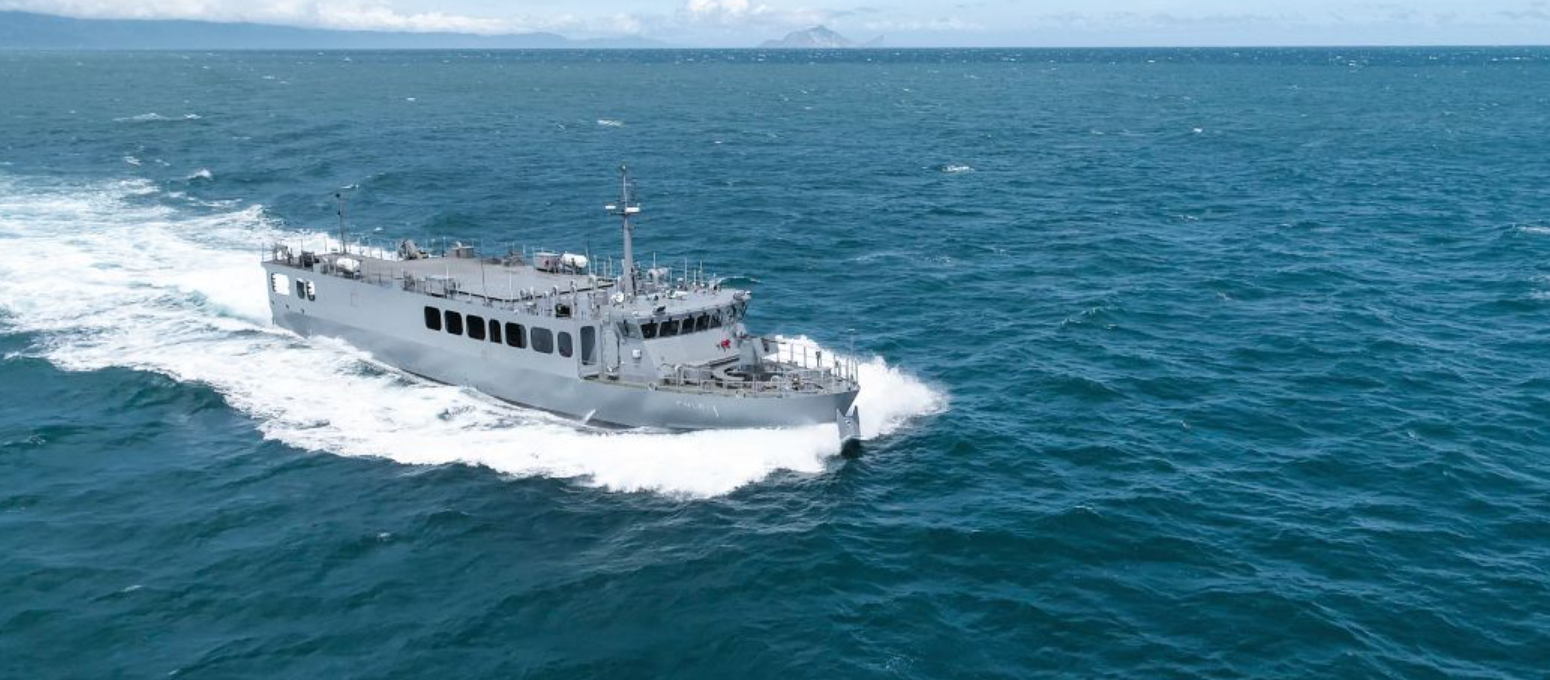
One of the four new FMLB minelaying ships built by Lung Teh shipyard to improve the ROCN’s asymmetric defence capabilities. Lung Teh Photo
Ian Easton, a senior fellow at the Project 2049 Institute think tank, told USNI News that the rapid build-up of Chinese forces has reversed Taiwan’s dominance at sea and left the ROCN with just a small number of ships to counter the PLAN across a whole range of different domains and battlespaces.
“[Taiwan] is so incredibly outgunned at this point,” he said, “there does not seem to be a commensurate attempt to develop a countervailing strategy on Taiwan’s part to take the initiative back.”
The ROCN fleet is based around aging second-hand former U.S. Navy surface combatants, including four Keelung-class (former Kidd-class) destroyers, 10 Cheung Kung-class (former Oliver Hazard Perry-class) frigates, and six Chi Yang-class (former Knox-class) frigates, as well as six Kang Ding-class (La Fayette-class) frigates built for Taiwan in France.
“The [ROCN) is spread out. They don’t have a lot of anything. When you try to be strong everywhere you run the risk of being strong nowhere,” Easton noted, “They are in this fuzzy space where Taiwan is making reforms and improving readiness and the ability to defend their nation and islands, but they are still fairly modest reforms at this point,” Easton added.
Taiwan is trying to address the balance and has increased its defense spending for 2023 by 13.9 percent over 2022, so that it now reaches about NT$586.3 billion, or USD$18.8 billion. Meanwhile, Dotson noted two trends in naval procurement: “One is that further drive towards indigenous production, at the same time in tandem with a move towards more of a focus on smaller surface vessels.”
The need for increased local shipbuilding has been highlighted by Taiwan’s Indigenous Submarine program. Dotson said that pressure from China means countries are now more reluctant to sell weapons to Taiwan, especially platforms like submarines that can be used for sea control.
“If they want submarines they are going to have to build them themselves, they might be able to get some technical assistance to help them along, but they are not going to be able to buy them,” he said.
With a special five-year budget allocation of NT$240 billion (USD $8.6 billion), Taiwanese shipbuilder CSBC Corporation laid the keel for a first-in-class boat in a Nov. 12, 2021 ceremony. CSBC stated that the submarine will be 70 meters long and displace about 2,500 tons. The first of eight new boats is scheduled for delivery in 2025 and the class will replace the ROCN’s existing fleet of two Hai Lung-class (Sea Dragon) submarines that were built in the Netherlands and commissioned from1987-88, as well as two World War II-era U.S.-built Hai Shih-class (Sea Lion-class) Guppy II boats that are largely used for training.
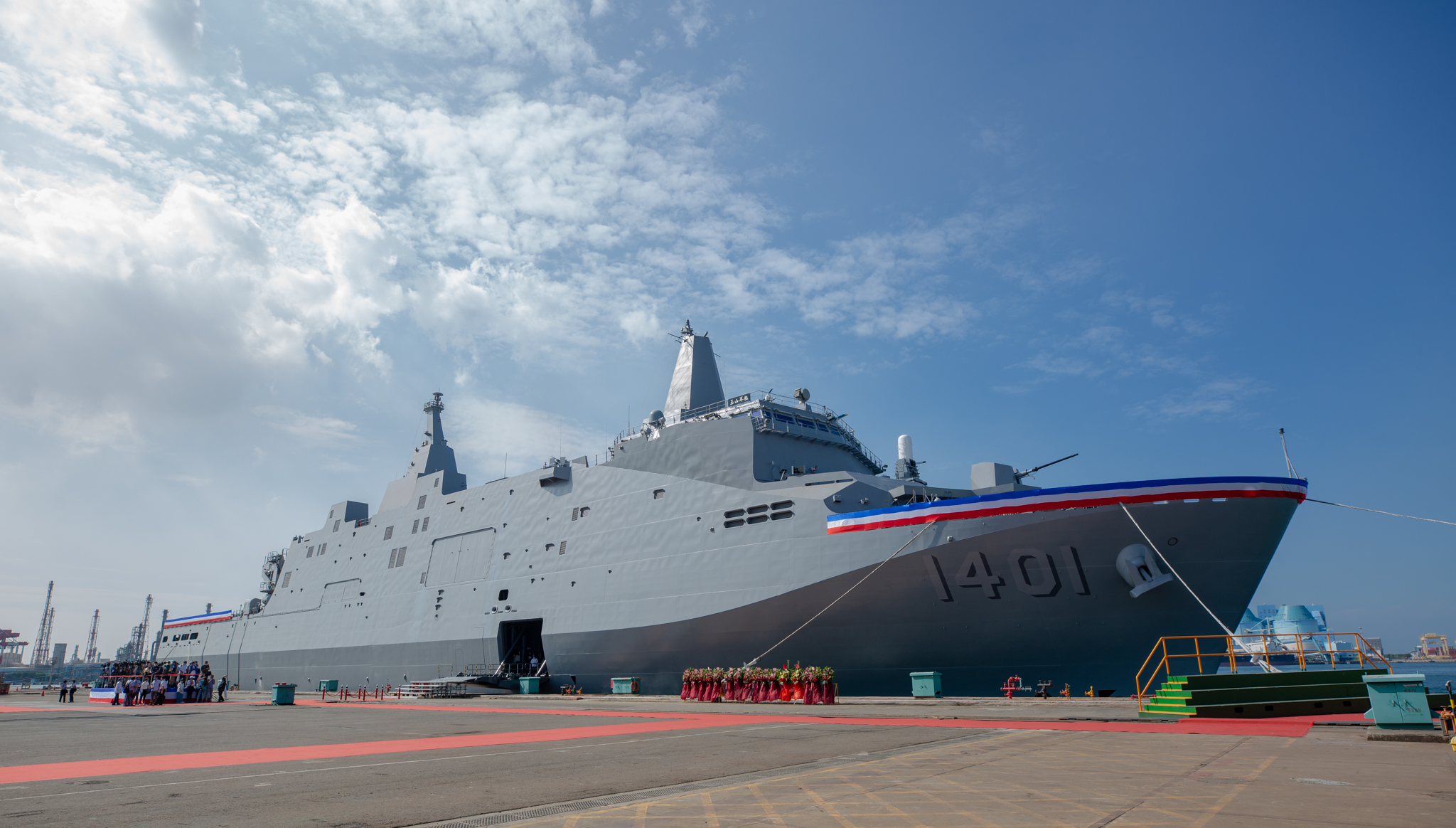
The new boats will provide an important sub-surface asymmetric capability, but Dotson also pointed to the procurement of the Tuo Chiang-class catamaran-hulled fast missile corvettes (FACMs) as an example of an asymmetric surface platform. He said a large part of the NT$69.6 billion (USD$2.24 billion) provided in the 2021 special budget supplemental for indigenous shipbuilding programs is devoted to the FACM.
The intention is for the new high-speed, stealthy, catamaran-hulled corvettes to provide an offensive capability that fills a gap between its larger frigates and small coastal patrol craft. They are in theory supposed to be a more mobile, faster with lower radar signature that can be used to target larger surface vessels.
Built by Lung Teh shipyard under the Hsun Hai (Swift Sea) project, the first vessel, ROCS Tuo Chiang (PGG-618), was delivered in 2014. However, due to complaints about its performance, the ROCN developed an improved design, increasing the length from 196 to 203 feet and displacement from 600 tons to 685 tons. The remaining ships are getting built to this larger design under a contract reportedly signed with Lung Teh in 2018 for NT$2.2 billion (USD$71 million) per ship. As a result, the second ship, ROCS Ta Chiang (PG-619), was not commissioned until September 2021 and the third, Fu Chiang, was launched in September 2022 and will get commissioned by the end of 2023. A class of 12 corvettes is expected, but plans to have six in service by the end of 2023 and another five shortly thereafter appear to have stalled.
The Tuo Chiang-class have a top speed of 43 knots. They are fitted with 16 anti-ship missiles that include the Hsuing Feng 2 (HF-2) and the Hsuing Feng 3 (HF-3). The HF-2 has a range of 81 nautical miles, or 150 kilometers, while the ramjet-powered HF-3 has a range of 108 nautical miles. HF-3 was built in response to the People’s Liberation Army Navy’s growing carrier and amphibious power projection capabilities. Latter variants of the Tuo Chiang-class are expected to have additional air defense missile systems to increase protection levels, including the Tien Chien II N (TC-2N) Sky Sword 2 missile that was first tested in 2021.
Project Yung Chieh is another asymmetric ship program procuring four Fast Mine Laying Boats (FMLBs) also from Lung Teh Shipbuilding. Known in the media as the Min Jiang-class, the first ship FMLB-1 entered service in December 2020 with the remainder completed by December 2021. At 1350-feet long and displacing 347 tons, the FMLBs are fitted with an automatic mine laying system that will rapidly lay down mine fields that can prevent PLAN ships from accessing Taiwan’s shores.
Taiwanese officials have stated that the FMLBs are designed “to face down an attack by amphibious vehicles trying to land in Taiwan, and would be equipped with a more precise automatic mine laying system.”
However, these vessels fall far short of what is required to fulfill an asymmetric strategy at sea. Furthermore, a project proposed by Adm. Lee and approved in December 2018 under the ODC to build up to 60 mini-missile assault boats worth NT$31.6 billion (USD$1.1 billion) was cancelled in August 2021.
At the time, the South China Morning Post reported that the ROCN claimed this was because of an unsatisfactory design. The National Chung-Shan Institute of Science and Technology (NCSIST) produced an 80-ton prototype craft called Glory Star for testing under the project in March 2020, but local media highlighted a lack of funding allocations across successive defense budgets amid rumors of opposition to the platform from new Chief of the General Staff Adm. Huang Shu-kuan in the lead up to the cancellation.
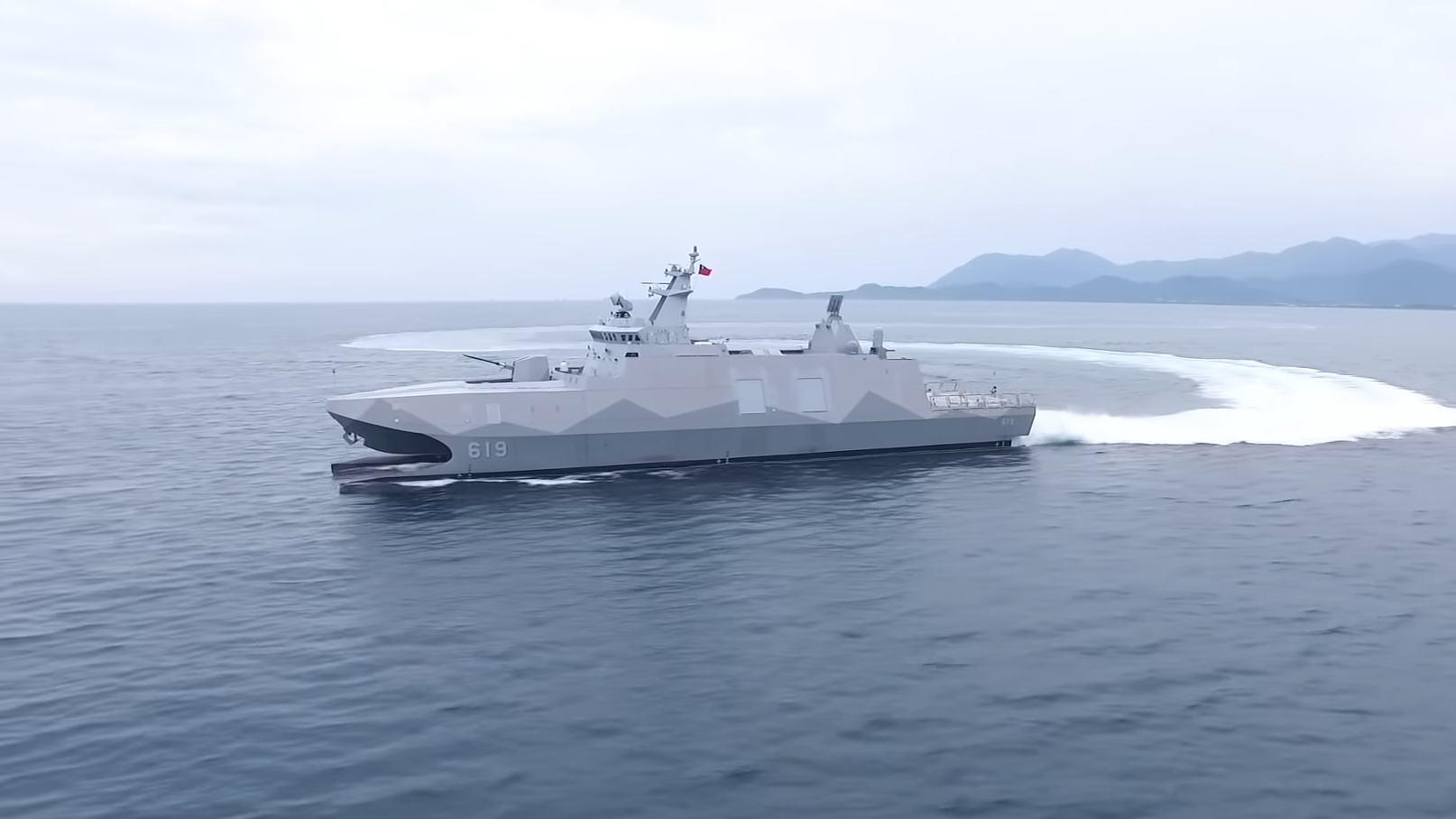
Taiwan is also embarking on an indigenous light frigate program under Project Zhenhai. State news sources have indicated construction of a pair of 330-foot long 2,000-ton frigates is expected to begin in 2023, with delivery scheduled for the 2026 timeframe. This is a significant reduction in size from the 4,500-5,000-ton frigates that were originally expected under the program, which was supposed to have started in 2018. Since Taiwan has not built a surface warship since 2004, it’s possible that Taiwan needs to build up experience in complex warship construction by first building a smaller frigate before embarking on a larger high-end next generation frigate.
At least eight and up to a possible 12 frigates are expected and will be delivered in two variants: anti-submarine warfare and anti-air warfare. These will replace some of the older surface combatants in the ROCN fleet and provide shipbuilding experience and capability to perhaps revisit a larger frigate replacement option at a later date. Taiwan media reported in May that a contract has been signed with Jong Shyn Shipbuilding for the light frigates, with construction starting in June. The ships will also be fitted with the TC-2N AAW missiles and HF-2 and HF-3 anti-ship missiles. They are designed with both an asymmetric role and to respond to Chinese activity in Taiwan’s maritime zones.
Meanwhile, in September 2022 the ROCN commissioned Yushan – its first indigenous landing platform dock (LPD). At 500-feet long and displacing 10,000 tons, it will replace the World War II-era vintage former U.S. Navy tank landing ships that have been in service since the mid-1990s and provide a capability to better re-supply Taiwan’s outlying islands. It is the first ROCN ship to be fitted with the TC-2N missile for self-defense, but it’s not an offensive platform.
“I think … that there’s some elements of Taiwan’s military acquisition programs where some of these platforms are acquired for prestige purposes,” Dotson said. He believes that Taiwan is trying to ‘split the difference’ by procuring platforms that can cover both traditional and asymmetric operations, but this means “you are not going to come up with the best solution on either side of the equation.”
Whilst Dotson has sympathy for Taipei’s dilemma of needing a traditional force to counter the PLA forces constantly encroaching on Taiwan’s borders, this Chinese activity is more annoyance than an existential threat. He explained that the prospect of an invasion is the main threat and if the ROCN has a structure based on traditional large surface combatants “most of those assets are going to be destroyed very quickly.”
He added: “The move to have more smaller vessels that could be more easily dispersed and perhaps strike back at a [Chinese] invasion force, that makes a lot more sense than larger platforms like frigates and destroyers that are probably going to be turned into flaming wreckage on day one.”
There’s also a focus on acquiring more anti-ship missiles. If the PLA is going to send an invasion force 90 to 100 nautical miles across the Taiwan Strait, then sinking and crippling ships is critical.
“For that purpose, you need as many platforms as you can get shooting as many anti-ship missiles as you can get,” Dotson said.
Easton agreed and said that the answer for Taiwan “is to build enough missiles and plenty of the launchers, whether they’re fast boats or land-based truck launchers, and make them survivable enough where you can all but guarantee you’re going to be able to sink about half of the Chinese Navy. That’s their goal. But they’ve not been able to demonstrate that they could actually do that.”
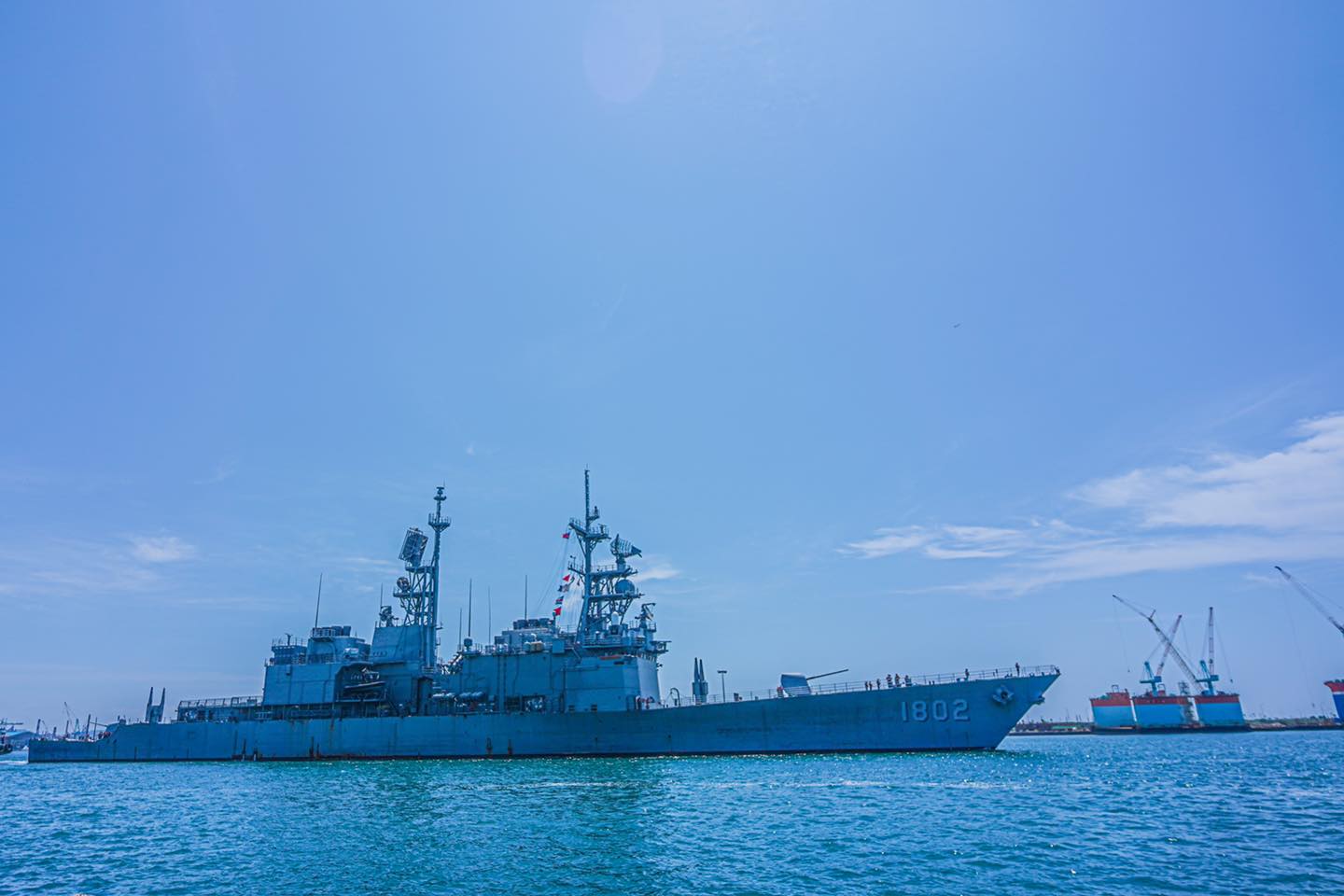
In November 2021, a separate budget allocation of NT$240 billion (USD$ 7.7 billion) was allocated for missile production from 2022 through 26. In March 2022, U.S. Naval Air Systems Command awarded Boeing a USD$493.3 million contract to provide Harpoon Coastal Defense Systems (HCDS) for Taiwan. This includes 100 HCDS launchers, 400 RGM-84L-4 Harpoon missiles, 25 radar systems and training equipment with deliveries due to be completed by 2028.
The indigenous development of the HF-2 and HF-3 is also part of this development. NCSIST has been working on increasing the range and introducing new electronic counter-countermeasures (ECCM) variants of the Hsuing Feng (Brave Wind) family of missiles. NCSIST has been increasing its manufacturing capacity with new and upgraded facilities since 2018. According to the MND, industry can now build 70 HF-3, 150 TC-2N and 96 Tien-Kung III, a new surface-to-air missile, per year.
Easton said that this is “one of the very positive aspects of the recent naval build-up … on paper Taiwan fields one of the world’s most advanced ASCMs, but we don’t have the data on actual performed real combat.”
He added: “They have focussed on mass production, but nobody actually knows what mass production means.” Although there have been increases in anti-ship missiles, sea surveillance radar and land-based missile units an integration of uncrewed assets, Easton warned that Taiwan has not been transparent about how many missiles it can make. He warned there are “rumors [sic] about slow production” related to “hang-ups in the defense [sic] industrial complex” and Taiwan is “struggling to produce large numbers of anything.”
After observing the Russo-Ukraine war, Taiwan is preparing to re-institute year-long conscription from January 2024 to help increase the size of active-duty personnel available. But training its forces is difficult, especially at sea, because of the constant presence of PLA forces.
Meanwhile, Taiwan remains isolated internationally The ROCN does not get invited to international maritime events like Rim of the Pacific or the meetings such as the Shangri-La Dialogue in Singapore – however Congress issued legislation requiring the U.S. invite Taiwan to RIMPAC. U.S. Navy ships neither visit Taiwan nor conduct Passage Exercises with the ROCN in the Taiwan Strait anymore – a significant step back from its level of presence historically.
Without a large and persistent U.S. naval presence, Taipei has to decide whether to continue dividing resources across two different strategies: maintaining a traditional naval force that could leave it open to invasion or pursuing an asymmetric one.





